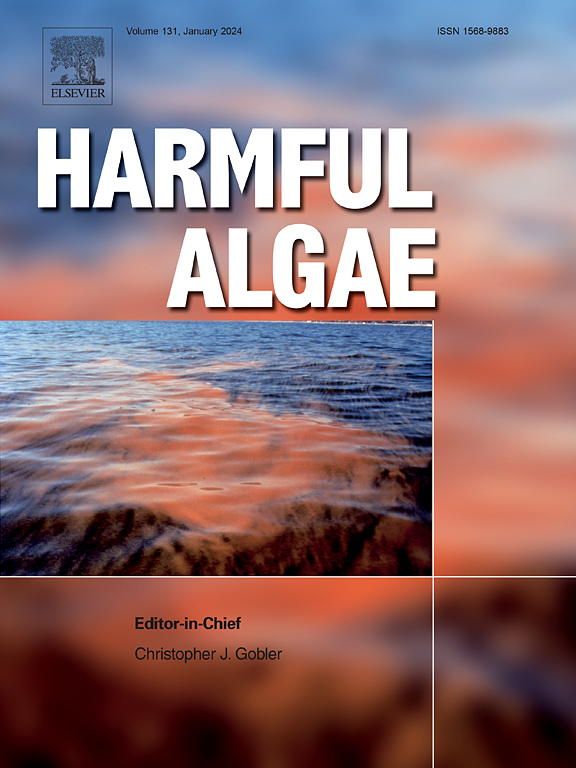Multi-year dynamics of harmful algae in Disko Bay, West Greenland
IF 4.5
1区 生物学
Q1 MARINE & FRESHWATER BIOLOGY
引用次数: 0
Abstract
Harmful algal blooms (HABs) increasingly affect Arctic coastal ecosystems, due to hydrographic and bathymetric conditions that support the accumulation of cells and cysts, and coupled with increasing temperatures, extensive bloom events can be easily triggered. However, various harmful algae species have been reported in the past and it is unclear which are most threatening in Greenlandic waters, a region that vitally depend on its fisheries. Here, we explore the diversity and succession of harmful algae by metabarcoding at a multi-year station in Greenlandic coastal waters, offering a comprehensive analysis of species dynamics over time. Dinoflagellates, diatoms and haptophytes, known for their toxin production and potential negative effects on ecosystems and food webs, were regularly detected across years and throughout all sampled months. Yet, results also indicate significant interannual variability in harmful algal occurrences, with high abundances of Alexandrium and increasing abundances of Aureococcus, Prymnesium, and Pseudo-nitzschia. Through a boosted regression tree analysis of the ecological drivers of HABs in Arctic waters, we identified an important role of climate-induced environmental variables such as temperature, salinity, and the number of ice-free days year-1. These findings provide critical baseline data for understanding the future risks of HABs in the Arctic and underscore the importance of ongoing, high-resolution monitoring.
西格陵兰迪斯科湾有害藻类的多年动态
有害藻华(HABs)对北极沿海生态系统的影响越来越大,因为水文和水深条件支持细胞和囊泡的积累,再加上温度的升高,很容易引发广泛的藻华事件。然而,过去曾报道过各种有害藻类,但目前尚不清楚哪种藻类对格陵兰水域的威胁最大,格陵兰水域是一个极其依赖渔业的地区。在这里,我们通过元条形码在格陵兰沿海水域的一个多年站探索有害藻类的多样性和演替,提供了一个物种动态随时间的综合分析。鞭毛藻、硅藻和褐藻以其产生毒素和对生态系统和食物网的潜在负面影响而闻名,在多年和所有采样月份都经常被检测到。然而,结果也表明有害藻类的年际变化显著,亚历山大菌的丰度很高,金黄色球菌、Prymnesium和伪nitzschia的丰度也在增加。通过对北极水域赤潮生态驱动因素的增强回归树分析,我们确定了气候诱发的环境变量(如温度、盐度和一年无冰天数)的重要作用。这些发现为了解北极赤潮的未来风险提供了关键的基线数据,并强调了持续高分辨率监测的重要性。
本文章由计算机程序翻译,如有差异,请以英文原文为准。
求助全文
约1分钟内获得全文
求助全文
来源期刊

Harmful Algae
生物-海洋与淡水生物学
CiteScore
12.50
自引率
15.20%
发文量
122
审稿时长
7.5 months
期刊介绍:
This journal provides a forum to promote knowledge of harmful microalgae and macroalgae, including cyanobacteria, as well as monitoring, management and control of these organisms.
 求助内容:
求助内容: 应助结果提醒方式:
应助结果提醒方式:


